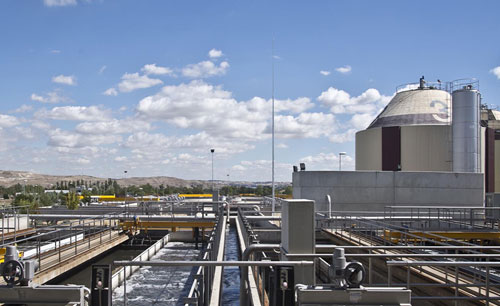The article describes the different ways in which manufacturing plants are using water. This includes an overview of the Food and Beverage, Oil and gas, steel, and food processing plants. You'll also learn about the importance of water reuse in each sector. These examples demonstrate the importance of considering the needs of different industries when it comes to water use and reuse. Here are some tips to keep when analyzing the water and wastewater streams in manufacturing.
Depending on the location of your home, you might have to purchase an STP to handle your sewage. Generally, residential buildings need at least one STP to treat sewage. Many STPs are located underground, making them difficult to maintain. Moreover, you may not be able to inspect them without hiring an expert. It is better to consult a professional if you have any doubts about the process.
Food and beverage manufacturers
Water sustainability is a key issue for the food and beverage industry. Water is a resource that is often wasted in the production of many products, and food and beverage manufacturers have begun considering ways to minimize water usage and increase the efficiency of their manufacturing processes. These initiatives are intended to reduce costs, increase companies' profits, and address environmental concerns. The industry also needs to be mindful of its environmental impact, as pro-environmental consumer groups are increasingly becoming more influential.
Sustainable water management plans are becoming more commonplace as more companies realize the importance of minimizing water consumption. These plans are not only more efficient, but they also help companies reduce environmental impact and production costs. By taking advantage of new technology, food and beverage manufacturers can realize a competitive edge in the market and minimize their ecological footprint. Using this technology can also help companies reduce costs while adding value to their product.
Oil and gas industries

While some counties in Texas account for over half of the water used by oil and gas operations, the oil and gas industry is also responsible for the majority of the rest. Oil and gas wastewater contains high concentrations of salt and suspended solids and can include metals such as arsenic and hydrocarbon compounds. Some of the water is disposed of in surface pits that have a high risk of contaminating groundwater supplies and polluting the air. In addition, a large amount is disposed of through deep underground injection wells, which can lead to earthquakes in some regions.

In addition to groundwater and river water, oil and gas companies use produced water, or "produced water," to process their products. Typically, this water rises to the surface during production and exploration. As a result, produced water needs to be efficiently managed. This paper will discuss the most common constituents of produced water and methods for managing them. This fact sheet will be helpful to those involved in the oil and gas industry, policymakers, and other parties interested in using and reusing this water.
Steel plants
The steel plants' water use and reuse are influenced by many factors. Some steel plants require water treatment to fit for internal use. Others use water jet-cutting machines to treat effluent streams. Either way, they are more cost-efficient than relying on raw water. Water availability also varies depending on location and the occasional vacillations in water quality. Steel plants can save money by using treated water in the plant.
Despite the large quantity of water used during steel production, only about ten per cent of the water is consumed during steelmaking. This is primarily due to evaporation during the cooling process. Steel plants can recover as much as 90 per cent of the water they use by employing water management strategies. Among these strategies are recycling, cascading, and other methods that help them manage water usage and reuse. Steel plants must consider the energy requirements required for water treatment to reduce the total amount of water they use.
Food processing plants
The food industry uses water extensively in various applications. It is also used as an aid in processing food, as well as for sanitizing and cleanup. As water scarcity increases due to climate change and environmental degradation, the industry must focus on using cleaner production methods to mitigate the risks of water shortages. Many new technologies for water management are already available, but there is still a need for more research and technology adoption.
One of the most common methods for reducing wastewater in food and beverage processing facilities is to reduce the amount of wastewater discharged into the collection network. Generally, wastewater discharges to this network are treated by Publicly Owned Treatment Works (POTWs) and treated according to the National Pollutant Discharge Elimination System. However, many processors do not have the technology to treat wastewater before it enters the collection network.
Automobile assembly plants
Water use is an important issue for automotive assembly plants. Vehicle manufacturing has several stages and consumes large quantities of water. The wastewater generated during vehicle manufacturing is contaminated with metals, oils, and various chemicals. Paint residue is harmful to the environment because it can enter the main water supply. This water is often used to clean the chassis. Automobile assembly plants use water for cleaning the car, including degreasing, paint application, and rinsing.
There are many studies about energy and carbon use in automobile production, but only a few have examined automobile assembly plants' water use and reuse. In addition, most studies that mention water use for automobiles are case studies involving specific locations and vehicles. In other words, most of the studies on water use associated with vehicles focus on the operation phase of a vehicle. However, according to Kim et al. (2015), only three published studies address automobile water use and reuse over the life cycle.







































Share Post